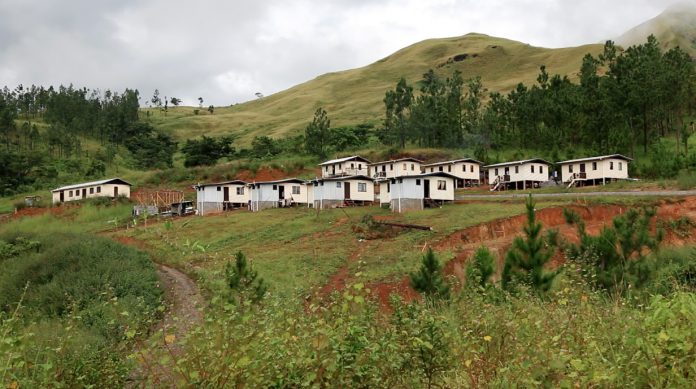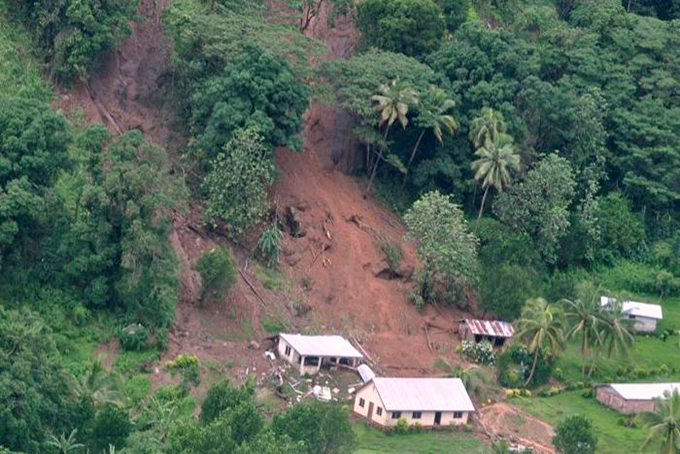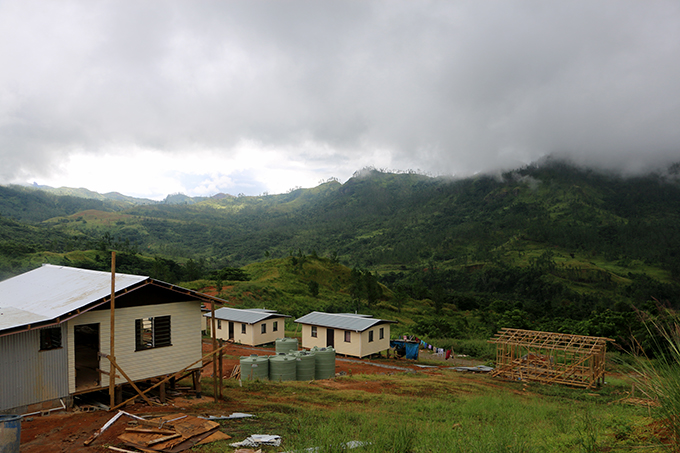
By Kendall Hutt in Auckland
By the end of the 21st century, sea levels are expected to rise by a maximum of 1.5 metres as a result of climate change. Tropical cyclones will increase in frequency, intensity and severity. Climate change is also projected to leave 150 million people displaced by 2040.
In the Pacific alone, the London School of Economics estimates 1.7 million people could be displaced by 2050 and in the Pacific, this is already happening.
Whole islands, communities, and villages are relocating in a move which is viewed as a form of climate change adaptation. Some 27,000 Carteret Islanders have relocated to nearby Bougainville, the people of Kiribati plan to relocate 2000km to nearby Fiji in 2020 after buying 6000 acres in 2014, and in Fiji itself, approximately 45 villages have been earmarked for relocation.
Julianne Hickey, director of Caritas Aotearoa New Zealand, says climate finance plays an important role in the Pacific.
“It’s critical because we need to have adaptation and mitigation measures in order to respond to the challenges of our changing environment in this region. We need to find alternative ways of doing things, cut our carbon emissions but adapt to the many changes that are around us.”

Data by the Secretariat of the Pacific Regional Environment Programme’s (SPREP) Pacific Climate Change portal reveals the Pacific currently receives climate finance from approximately 10 funds which are both bilateral and multilateral. The European Union (EU), United Nations Framework Convention on Climate Change (UNFCCC) and the United Kingdom are the central players.
Stefano Manservisi, director-general of International Cooperation and Development of the European Commission (DEVCOM), told Asia Pacific Report in April climate change was the key focus of the EU’s continuing relationship with the Pacific. “Having consulted already with national level authorities on how we can step-up support, notably on climate change, we are 100 percent backing determination to do more,” he said.
However, New Zealand also plays a role in funding mitigation and adaptation projects in the region. The Ministry of Foreign Affairs and Trade (MFAT) says it is serious about addressing climate change in New Zealand and in the Pacific.
At COP21, NZ$200 million was pledged in climate related support over four years and the government has contributed three million dollars to the UNFCCC’s Green Climate Fund. One of MFAT’s focuses is switching Small Island Developing States (SIDS) to a low-carbon economy, although New Zealand has been criticised for the lack of its own clean energy revolution and commitment to the Paris Agreement.
‘Most in need’
However, strong climate finance in the region has not always been the case, Hickey said.
“A few years ago there were very little climate finance flows. They were through more bilateral arrangements but now we’re seeing the multilaterals…we’re starting to see an impact but it’s more at the national government level and it’s not always reaching those who are the most in need.”

Independent website Climate Funds Update notes: “The region’s most vulnerable countries, particularly the small Pacific Island states, receive very little funding.”
Speaking at the annual conference of the Australasian Catholic Press Association (ACPA) last week, Hickey said it was important to “speak truth to power” and ask where climate finance was going.
“In the beginning, none of the climate finance was reaching the Pacific, let alone the vulnerable on the margins and those most impacted. What we’re now seeing is the core of the climate finance is flowing, but we need to make sure we keep asking the questions,” she said.
Asked to expand on this when talking separately to Asia Pacific Report, Hickey explained climate finance in the region is geared towards large projects which may not be reaching the most vulnerable.
“There’s a lot of money available for climate change. For mitigation and adaptation, our biggest concern is that it’s about reaching those on the ocean edges and at the grassroots. It’s about reaching the poor and the vulnerable,” she said.
Climate funding benefits
However, one community to benefit from climate change funding is the Fijian village of Tukuraki. Located in the mountainous highlands of Ba, Viti Levu, the village was all but destroyed following a fatal landslide in January 2012.
In the same year, the village was hard-hit by Cyclone Evan and in 2016 was devastated by Cyclone Winston, scattering the community far and wide across the northwest of the island.

Thanks to an EU-funded project in 2014 of F$600,000 (NZ$415,000) and land gifted by a nearby clan, the village, made up of 10 families, was able to relocate to a new site in July 2017. The relocation project has provided the village with 10 new homes, a community hall which doubles as an evacuation centre – it can withstand a category five cyclone – and a Methodist church. The villagers were also given access to clean, running water, showers and flush toilets.
A source from the Ministry of Economy’s Climate Change Unit stresses relocations are not possible without such external funding because they are a long and expensive process.
“It can only be possible with the help of donor funds, financial institutions, and co-finance with the community itself.”
When the Bearing Witness project visited in April, Vilimaina Botitu and her family were one of three families living in the partially built village – one house was still to be built, along with the Methodist church.
She told the Bearing Witness project: “Staying over here, it’s good. A source of water, everything, is just here inside the house. Especially good for us women, is the bathroom and toilet…Before we had to struggle, living the old Fijian lifestyle.”

The Green Climate Fund alone has seen 68 percent of its funding directed towards adaptation and mitigation projects. Of its 43 recent projects, six of these have been in the Pacific. The Solomon Islands, Samoa, Cook Islands, Vanuatu, Tuvalu and Fiji have received funding for adaptation and mitigation projects from hydropower development to urban water supply and wastewater management.
However, it is important to remember adapting to climate change can be bittersweet, Hickey said.
“When sea levels rise they lose their home, they lose their place of connection to the land, they lose connection to where their ancestors are buried, and often they lose access to their traditional food sources.
‘Whole new way of life’
“They need to learn a whole new way of life…to live and thrive in a new place,” she said.
For Botitu, the long, gruelling relocation process had cost Tukuraki its rich, but simple life, she said.
“The old Tukuraki, it was a nice village. The relocated site just gives us a place to sleep. There is no place to do the farming.”

So while relocations in the Pacific may be an effective, but bittersweet, form of climate change adaptation Hickey says, it is in danger. Hickey warns if the Pacific sees a fall in funding or loses it altogether, the region will suffer.
“If the Pacific does not build up its resilience within villages, communities and cities, we stand to see loss of life, we potentially will lose food and food sources and that ultimately will affect our health and our wellbeing.
“The unpredictability of climate change means that if climate finance were not able to reach the Pacific or go to other places, the overall health or wellbeing of us as individuals and communities will be severely impacted.”











































